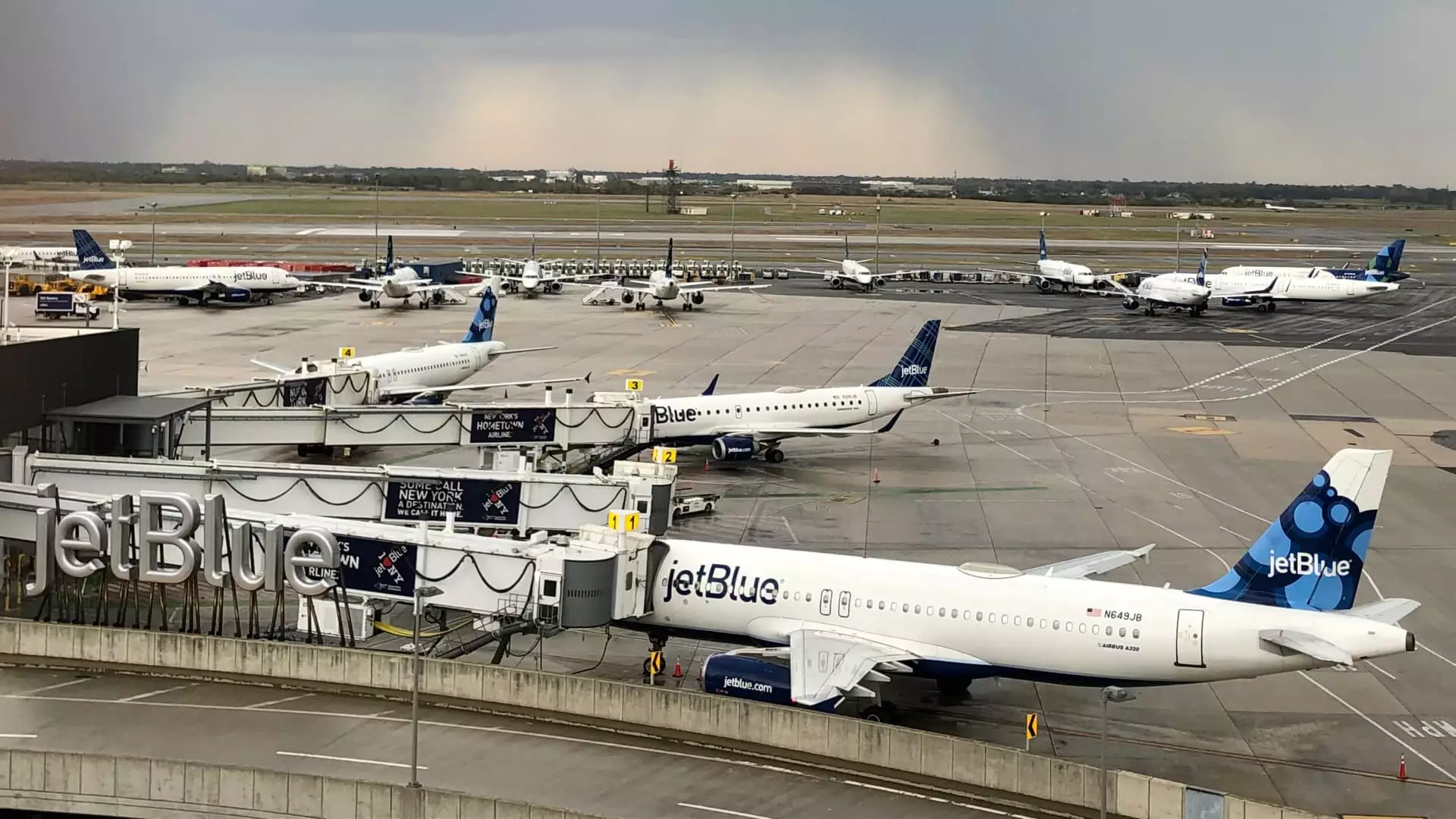JetBlue Airways has set the stage for a significant evolution in its operational landscape by announcing the introduction of its first airport lounges, marking a notable shift from its traditional low-cost carrier model. Over two decades in the aviation industry, JetBlue is now eyeing an upscale demographic, hoping to attract high-spending travelers who are increasingly drawn to the amenities typically associated with higher-tier airlines. This move aligns JetBlue with industry competitors like Delta, United, and American Airlines, who have long capitalized on customer loyalty and premium services. As JetBlue prepares to launch lounges at its hubs in New York and Boston, the airline is not merely adding luxurious facilities; it is fundamentally recalibrating its market position.
The announcement reveals JetBlue’s ambition to create a differentiated customer experience, focusing on amenities designed for premium travelers. Slated to open in late 2024, the first lounge will occupy an impressive 8,000 square feet at New York’s John F. Kennedy International Airport, with a second, even larger 11,000-square-foot facility set for Boston Logan International Airport shortly thereafter. This expansion is a strategic move not only to enhance brand appeal but also to drive revenue through a refined travel experience that includes workspaces, cocktail bars, and light dining options. The decision to invite access for specific customer segments stemming from its upcoming premium credit card and Mint business class signifies JetBlue’s commitment to curating an exclusive atmosphere for its highest-paying guests.
Balancing Accessibility and Exclusivity
While the lounges promise an appealing experience, JetBlue faces the challenge of managing access to prevent overcrowding and uphold the quality experience they aim to deliver. Initial access will be tightly controlled, focusing on customers who purchase Mint class tickets for trans-Atlantic flights and those holding top tier loyalty status or the new credit card. This strategic restriction indicates a cautious approach, as JetBlue exec Jayne O’Brien has conveyed the intention to ensure that the lounges do not detract from the overall traveler experience. Their decision to exclude passengers from other Mint routes temporarily demonstrates a thoughtful operational strategy that prioritizes customer satisfaction.
JetBlue’s entry into the lounge arena is not occurring in isolation; it’s reflective of a wider trend among airlines to enhance their facilities and services to appeal to a lucrative customer base. The competitive landscape illustrates an increasing investment in airport lounges, catering to first-class and business-class travelers who expect more than just standard amenities. Delta’s recent unveiling of its first Delta One lounge at JFK, alongside similar initiatives from American and United, highlights the urgency for JetBlue to elevate its offerings. Such strategic expansions are designed not only to enhance passenger satisfaction but also to foster brand loyalty, turning infrequent flyers into regular patrons.
The Broader Context of Airline Services
Beyond lounge access, the move towards premium services is indicative of a larger trend within the aviation industry. Airlines like Southwest are adjusting their product offerings, such as enhanced legroom seating, poised to attract customers who may otherwise choose competitors offering more comfortable options. JetBlue, alongside airlines like Spirit and Frontier, which are also exploring bundled offerings, is stepping into this competitive atmosphere with the intent to redefine the passenger experience.
Conclusion: A New Era for JetBlue
JetBlue’s foray into airport lounges represents more than just an operational enhancement; it signifies a comprehensive strategy aimed at rebranding the airline to align with contemporary traveler expectations. By stepping into the realm of premium services, JetBlue is not simply competing with other low-cost carriers but is carving out its niche among legacy airlines. As the aviation landscape continues to evolve, the choices made by JetBlue could very well dictate its success in navigating this new chapter, creating opportunities for profitability while enhancing the travel experience for its most dedicated customers.

Leave a Reply